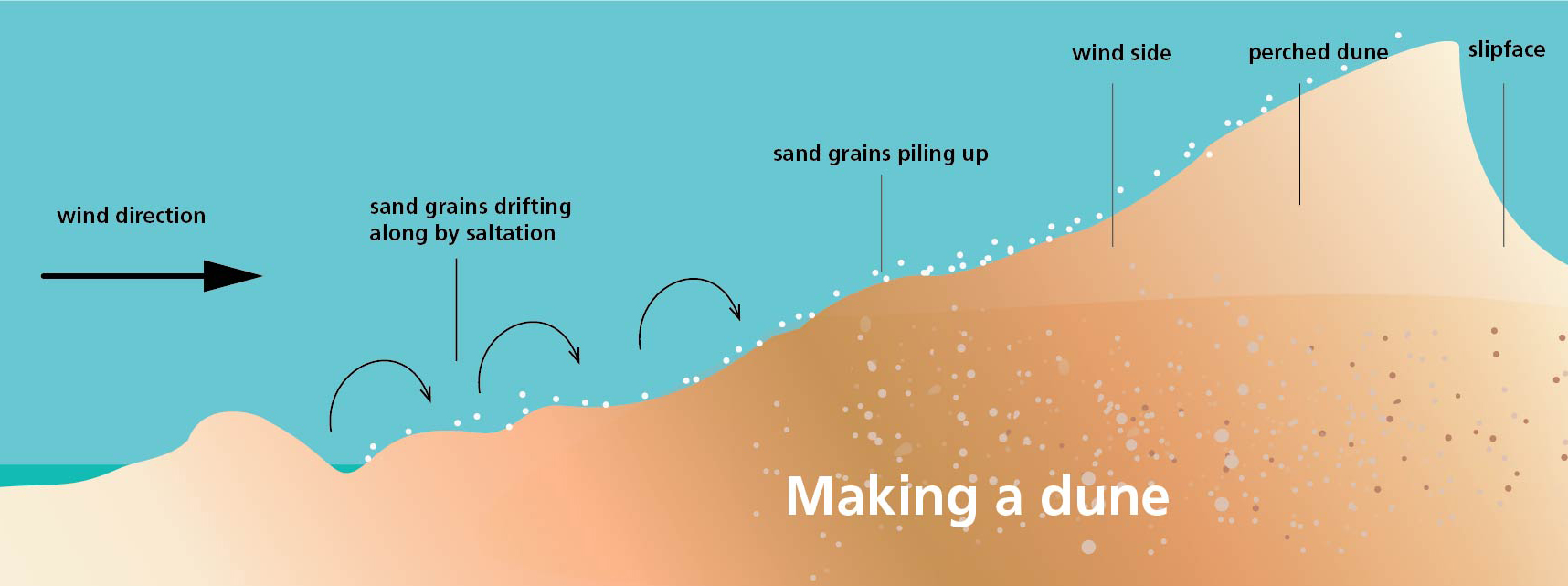
The Dune System is a fascinating and dynamic geographical feature that can be found in various parts of the world. Composed of sand dunes shaped by wind and other natural forces, these stunning landscapes are not only visually captivating but also hold a wealth of secrets and intriguing facts. From their formation and unique patterns to the diverse ecosystems they support, there is much to learn about dune systems.
In this article, we will explore 15 captivating facts about dune systems that will not only expand your knowledge but also inspire a sense of wonder for these natural wonders. So, buckle up and get ready to embark on a journey through the intriguing world of dune systems.
Key Takeaways:
- Dunes are ever-changing natural wonders formed by wind or water, reaching impressive heights and playing a crucial role in stabilizing ecosystems. They are dynamic and valuable for scientific research, but also need protection from human activities.
- Dunes offer unique recreational activities like sandboarding and sand skiing, and create special ecosystems for plants and animals. They can be found in unexpected places and are crucial for understanding geological processes and climate change.
Dunes are formed by wind or water.
Dunes are fascinating landforms that can be formed by either wind or water. The wind carries particles of sand or sediment and deposits them in piles, creating dunes in arid regions. In coastal areas, dunes can form as a result of wave action pushing sand onto the shore.
Dunes can reach impressive heights.
Some dunes can reach incredible heights, with the tallest dunes in the world towering over 750 feet. The height of a dune is determined by a variety of factors, including the availability of sand, wind strength, and local conditions.
Dune systems are dynamic and constantly changing.
Dune systems are not static formations. They are constantly shaped by wind and water, undergoing continuous transformation. This dynamic nature makes dune systems truly captivating to observe and study.
The shape of a dune depends on wind direction.
The direction of the prevailing wind has a significant impact on the shape of a dune. Wind blowing from a consistent direction will cause the dune to form a distinct crescent shape known as a barchan dune, while winds blowing from multiple directions can create complex star or dome-shaped dunes.
Dunes play a crucial role in stabilizing ecosystems.
Dunes act as natural barriers, protecting inland areas from the impact of coastal erosion and storms. They provide habitat for unique plant and animal species adapted to thrive in sandy environments.
Some dunes emit a low humming or booming sound.
Certain dunes, known as “singing sands,” produce a low-frequency sound when the sand grains rub against each other due to wind or movement. This fascinating phenomenon is still not fully understood by scientists.
Dune systems can be found on every continent except Antarctica.
From expansive desert dunes to coastal dune formations, these remarkable features can be found across the globe. They vary in size, shape, and composition depending on the local climate and geographical conditions.
Dunes can be found in unexpected places.
While deserts and coastlines are the most common locations for dunes, they can also be found in surprising places such as inland regions with sandy soil or even on the surface of other planets like Mars.
The color of a dune depends on its composition.
The color of a dune can vary depending on the composition of the sand or sediment. Dunes made up of quartz-rich sand tend to be lighter in color, while those containing iron or volcanic ash may have darker hues.
Dunes can migrate over time.
Due to the continuous action of wind or water, dunes have the ability to slowly migrate over time. Some dunes can move several meters or even kilometers in a single year, reshaping the landscape as they go.
Dune buggies are popular recreational vehicles.
Dune buggies, lightweight off-road vehicles, are commonly used to navigate sand dunes for recreational purposes. These vehicles are designed to handle the challenging terrain of dunes, providing an exciting and exhilarating adventure for enthusiasts.
Dune systems are valuable for scientific research.
Dune systems offer scientists valuable insights into geological processes, climate change, and the behaviors of wind and water. Studying dunes can help unravel the complexities of our planet’s past and better understand its future.
Dunes can create unique ecosystems.
The shifting sands of dunes provide a habitat for a wide range of plants and animals that have adapted to thrive in this seemingly inhospitable environment. From specialized plant species with deep roots to insects and reptiles that camouflage with the sand, dunes host a fascinating ecosystem.
Sandboarding and sand skiing are popular dune activities.
Just like snowboarding or skiing on snow, sandboarding and sand skiing involve gliding down the slopes of dunes using specially designed boards or skis. These adrenaline-pumping activities attract adventure seekers looking for a unique thrill.
Protecting dune systems is crucial.
Dunes face a range of threats, including human activities such as construction and off-road vehicle use. It is essential to preserve and protect these fragile ecosystems to maintain their beauty, ecological value, and scientific significance.
Conclusion
The Dune System is a fascinating and dynamic geographical feature that spans across various regions of the world. From the towering sand dunes of the Sahara Desert to the impressive coastal dunes found along shorelines, these natural formations have captivated the imagination of people for centuries.
With their unique characteristics and ecological significance, dunes play a crucial role in the functioning of ecosystems. They provide habitats for various plant and animal species, act as natural barriers against coastal erosion, and contribute to the overall biodiversity of the surrounding areas.
Exploring the diverse landscapes of dune systems not only offers a breathtaking view but also educates us about the forces of nature and the intricate interplay between land and sea. Whether you’re a nature enthusiast or simply curious about Earth’s wonders, the allure of dunes is undeniable.
So next time you find yourself near a dune system, take a moment to appreciate their beauty and embrace the mysteries they hold. The world of dunes is waiting to be discovered!
FAQs
1. What exactly is a dune system?
A dune system refers to an area where sand dunes are present, typically formed by wind or water action. These dunes can vary in size, shape, and location, and can be found in deserts, coastlines, and even some inland regions.
2. How are dunes formed?
Dunes are formed when sand particles are carried by wind or water and deposited in a specific area. The shape and size of dunes are largely influenced by factors such as wind direction, speed, and the availability of sand particles.
3. What are the different types of dunes?
There are various types of dunes, including barchan dunes, transverse dunes, parabolic dunes, and star dunes. Each type has its own unique characteristics and formation process, resulting in distinct shapes and patterns.
4. Are dunes only found in deserts?
No, dunes can be found in a variety of environments, including deserts, coastal areas, and even some inland regions. Coastal dunes, for example, form along shorelines as a result of wind and wave action.
5. Do dunes serve any ecological purpose?
Yes, dunes play a crucial role in ecosystems. They provide habitats for specialized plant and animal species that are adapted to surviving in the harsh conditions of sandy environments. Dunes also act as natural barriers, protecting coastal areas against erosion caused by storms and tides.
6. Can dunes move?
Yes, dunes are constantly shifting and moving due to the forces of wind and water. This movement is known as dune mobility and can occur over the course of days, months, or even years.
7. Are dunes protected?
Many dune systems are protected as natural or cultural heritage sites due to their ecological importance and unique geological features. It is important to respect and conserve these areas to ensure their preservation for future generations.
Was this page helpful?
Our commitment to delivering trustworthy and engaging content is at the heart of what we do. Each fact on our site is contributed by real users like you, bringing a wealth of diverse insights and information. To ensure the highest standards of accuracy and reliability, our dedicated editors meticulously review each submission. This process guarantees that the facts we share are not only fascinating but also credible. Trust in our commitment to quality and authenticity as you explore and learn with us.


